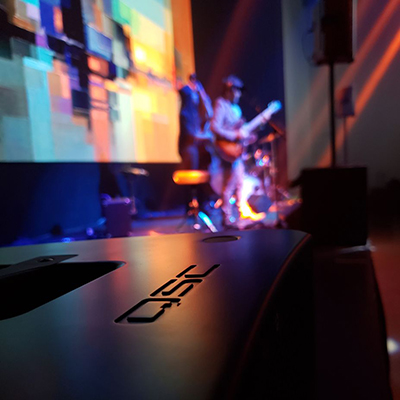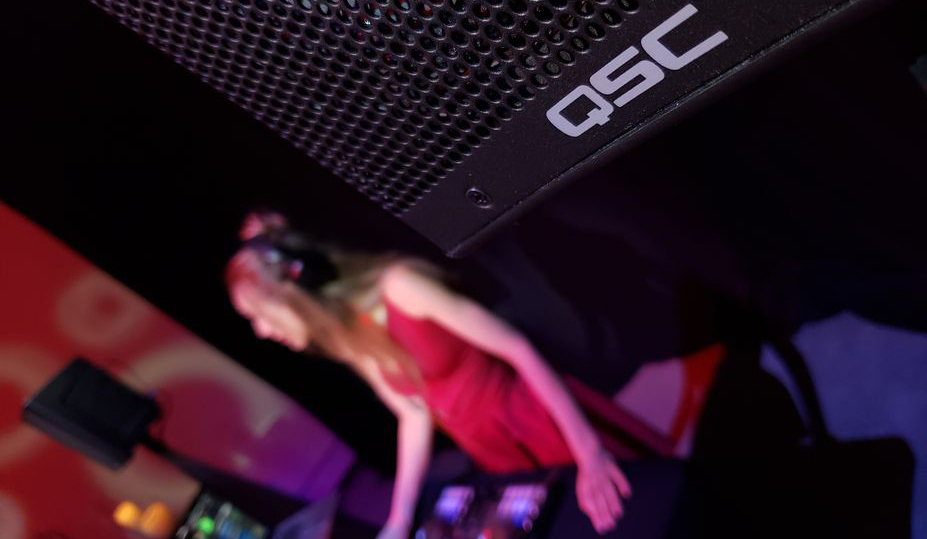The audio world around us is full of captivating sounds, incredible music as well as noise of all kinds. With the advent of electroacoustic music reproduction, we are exposing ourselves – more than we may think – to loud sounds over prolonged periods. The music – and background noise – present in recreational venues such as nightclubs, bars, cinemas, concerts, sporting events and even fitness classes adds up, every day, to the overall sound energy level that a person’s ears are exposed to. So, is this an issue for my hearing? What can I do to keep an excellent hearing over time? In answering these questions, this article aims to provide some information and guidelines.
 Since 1968, QSC has been serving the sound reinforcement needs of performers, audio professionals and entertainment venues with a wide range of legendary amplifiers, industry-leading loudspeaker lines and cutting-edge digital mixers. A number of generations have now been using QSC gear in a multitude of applications the world over. We want to perpetuate this extraordinary history and to do so we continue to design our products and systems to help inspire great performances and deliver amazing experiences for audiences everywhere. The future is in the youth, so it seems vitally important that the young generations have – and keep having – excellent hearing abilities. The subtle details in equalization, the fine improvements in sound reproduction, the art of sound mixing, all these aspects can only be appreciated if one has good hearing capabilities.
Since 1968, QSC has been serving the sound reinforcement needs of performers, audio professionals and entertainment venues with a wide range of legendary amplifiers, industry-leading loudspeaker lines and cutting-edge digital mixers. A number of generations have now been using QSC gear in a multitude of applications the world over. We want to perpetuate this extraordinary history and to do so we continue to design our products and systems to help inspire great performances and deliver amazing experiences for audiences everywhere. The future is in the youth, so it seems vitally important that the young generations have – and keep having – excellent hearing abilities. The subtle details in equalization, the fine improvements in sound reproduction, the art of sound mixing, all these aspects can only be appreciated if one has good hearing capabilities.
Noise-induced hearing loss is irreversible
Exposure to loud sounds for any length of time causes fatigue of the ear’s sensory cells. The result is temporary hearing loss or tinnitus (a ringing sensation in the ear). A person enjoying a loud concert may experience a ‘muffled’ sense of hearing at the end of it. The hearing will improve as the sensory cells recover. When the exposure is particularly loud, regular or prolonged, it can cause permanent damage to the sensory cells and other inner ear structures, resulting in irreversible hearing loss. The first impact is on high frequencies and this may not be noticeable immediately. Continued exposure leads to the progression of hearing loss, ultimately affecting speech comprehension and having a serious, negative impact on the individual’s quality of life.
How do we define hearing loss?
First, let me recall that human hearing extends in frequency from 20 Hz to 20 kHz, and in sound intensity from 0 decibel (dB) to 120 dB or more. Zero decibel does not represent the absence of sound, but rather the softest sound an average, unimpaired human ear can hear. In addition, sound is generally uncomfortably loud above 90 dB and 120 dB represents the threshold of pain. Hearing loss exists when there is diminished acuity to sounds normally heard. It can be a partial or a total inability to hear. Hearing loss is diagnosed when hearing tests find that a person is unable to hear 25 decibels in at least one ear.
World’s figures
The most recent report from the World Health Organization (WHO) estimates that billion young people worldwide could be at risk of hearing loss due to unsafe listening practices.
- Over 43 million people between the ages of 12–35 years live with disabling hearing loss due to different causes.
- 1 in 6 teens has permanent hearing loss from sound overexposure.
- Teen hearing loss has increased by 30% in the last decade.
What is safe listening?
Safe listening levels depend on the intensity (loudness), duration (length of time) and frequency (how often) of the exposure. These three factors are interrelated and contribute to the overall sound energy level that a person’s ears are exposed to. The total amount of sound energy a person can safely receive is effectively constant. We can be exposed to the same amount of energy with lower volumes listened to over a long period or with louder sounds that are heard for a short duration. Permissible levels of daily exposure to noise have been identified accordingly, taking into account the total permissible ‘dose’ of daily sound energy.
85 decibels is considered the highest safe exposure level up to a maximum of 8 hours. The permissible time for safe listening decreases as sound levels increase. For example, a sound as high as 110 dB (large subway platform) can be safely listened to for only 15 minutes each day.
The output of personal audio players can range from 75 dB to as high as 136 dB. Hence, setting the right output level is key and directly related to the total listening duration.
At nightclubs and bars, average sound levels can range from 104 dB to 112 dB. Levels at pop concerts will generally be even higher. Bartenders may expose themselves to the same level of loudness in 15 minutes of music at 100 dB that an industrial worker gets in an 8-hour day at 85 dB.
Here are a few more sounds and average loudness:
- Whisper: 20 dB
- Conversation: 60 dB
- Lawnmower: 100 dB
- MP3 Player: 110 dB
- Concert/Club: 120 dB
- Fireworks: 150 dB
How loud and how long until hearing damage?
| Loudness | Time to damage |
| 85 dB | 8 hrs |
| 90 dB | 4 hrs |
| 95 dB | 2 hrs |
| 100 dB | 1 hrs |
| 105 dB | 30 min |
| 110 dB | 15 min |
| 115 dB | 8 min |
| 120 dB | 4 min |
| 125 dB | 2 min |
| 130 dB | 1 min |
| 135 dB | 30 sec |
| 140 dB | 15 sec |
| 150 dB | 7 sec |
What can you do about it?
The good news is that noise-induced hearing loss can be prevented by following simple, safe listening practices.
Control the volume – the daily, recommended safe volume level is below 85 dB for the duration of a maximum of eight hours. Sounds may be too loud if people must raise their voices to make themselves understood to a listener or if it feels difficult for the listener to understand someone who is at an arm’s length away. Even a small reduction in volume can offer significant protection.
Wear earplugs – when frequenting nightclubs, high-energy concerts, sporting events and other loud venues, use earplugs as hearing protection. Well-inserted earplugs can help to reduce the level of exposure considerably, between 5 dB to 45 dB, depending on the type of earplugs.
User quality noise-cancelling headphones – such headphones cut down significantly background noise, whilst allowing users to hear sounds at lower volumes than otherwise needed. For example, frequent users of personal audio players on trains or airplanes should consider using noise-canceling headphones.
Respect safe listening levels – determining the safe listening level on personal audio players by setting the volume to a comfortable level in a quiet environment to no more than 60% of the maximum volume is another way to keep the volume down.
Limit time spent in a very loud environment – the duration of the exposure to noise is one of the key factors contributing to overall sound energy levels. The duration can be minimized by:
- Have short listening breaks to reduce the overall exposure duration.
- Move away from loud sound sources. In very loud venues, people should stay at reasonable distances from loudspeakers. Moving to quieter locations within venues can reduce the level of exposure.
- Limit the daily use of personal audio players. While it is important to keep the volume down, limiting the use of personal audio devices to less than one hour a day would contribute a lot to reducing noise exposure hazards.
Monitor safe listening levels – smartphone technology can be used to measure noise exposure levels and inform users about their risk for noise-induced hearing loss.
Check your hearing – adolescents and young adults should be encouraged to check their hearings regularly.
Conclusion
Hearing is a precious faculty and hearing damage due to excessive sound exposure cannot be reversed. For musicians, entertainers and audio professionals any hearing loss affects not only their quality of life, but also their work and career. However, noise-induced hearing loss is preventable with simple, cautious measures. QSC products are engineered to help inspire great performances and deliver amazing experiences, so let’s make sure the future generations will also be able to share their passion and creativity, taking care of their hearing at the same time.
Références:
World Health Organization – Department for Management of NCDs, Disability, Violence and Injury Prevention (NVI), Geneva, Switzerland – www.who.int
Starkey Hearing Foundation – 6700 Washington Avenue South, Eden Prairie, MN 55344 – www.listencarefully.org
